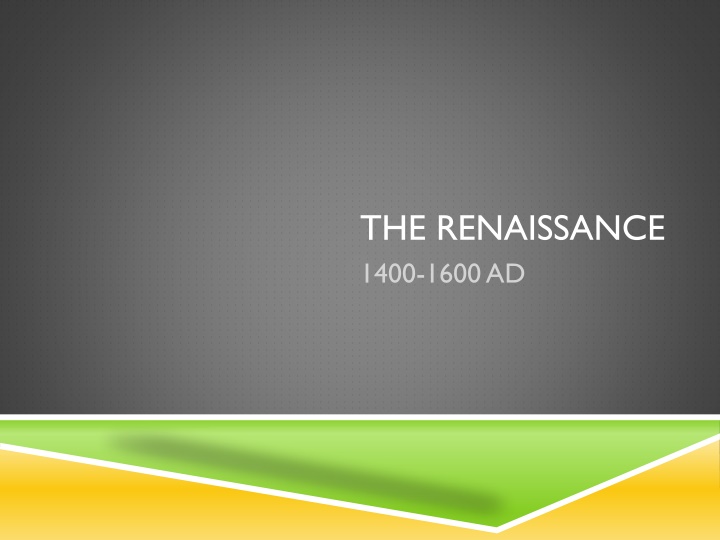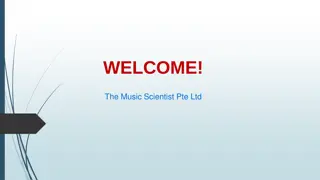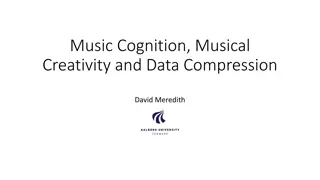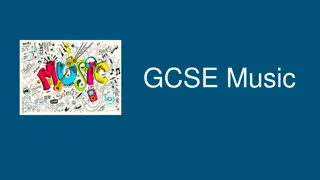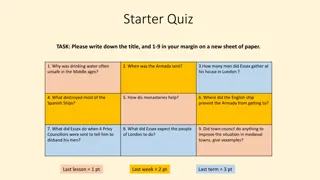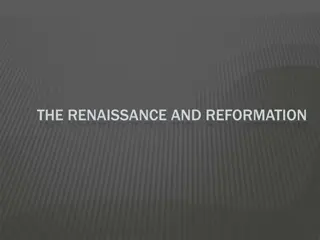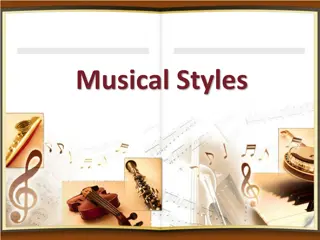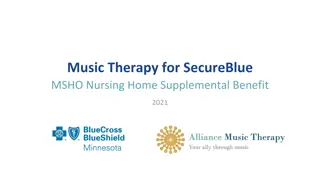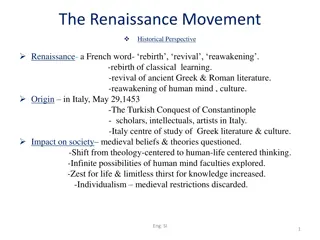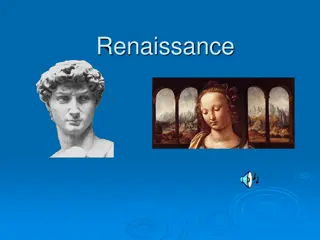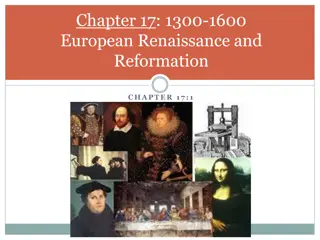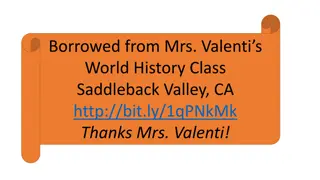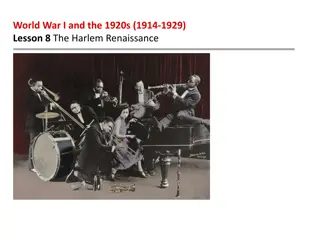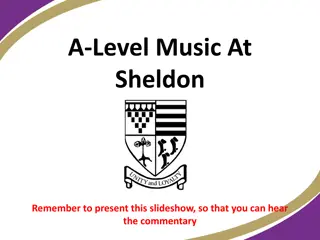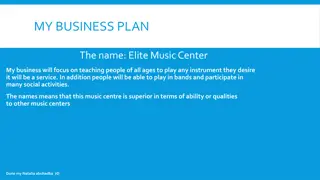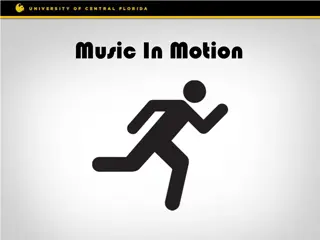Exploring the Renaissance: Art, Music, and History
The Renaissance, spanning from 1400 to 1600 AD, was a period of significant cultural and artistic growth in Europe. Beginning in Italy and gradually spreading across the continent, this era saw advancements in art, music, literature, and technology. Notable figures like Michelangelo, Leonardo da Vinci, William Shakespeare, and Johann Gutenberg made remarkable contributions. Musical innovations included polyphonic vocal music with intricate harmonies. The Protestant Reformation around 1500 also influenced societal changes during this time.
Download Presentation

Please find below an Image/Link to download the presentation.
The content on the website is provided AS IS for your information and personal use only. It may not be sold, licensed, or shared on other websites without obtaining consent from the author.If you encounter any issues during the download, it is possible that the publisher has removed the file from their server.
You are allowed to download the files provided on this website for personal or commercial use, subject to the condition that they are used lawfully. All files are the property of their respective owners.
The content on the website is provided AS IS for your information and personal use only. It may not be sold, licensed, or shared on other websites without obtaining consent from the author.
E N D
Presentation Transcript
THE RENAISSANCE 1400-1600 AD
BEGINNING OF THE RENAISSANCE Began slowly, at different times in different regions in Europe Began as early as 1350 in Italy, but didn t arrive in France until 1500 England didn t join in until 1550!
BEGINNING OF THE RENAISSANCE Art, music, and literature also joined the Renaissance at different times Art historians say the Renaissance began in painting in the 1330s Literary historians say Renaissance poetry began around 1350 Music historians say Renaissance music does not appear until after the 1420s
ABOUT THE RENAISSANCE Literally translates as rebirth in French A time of advancement in society: Exploration (Christopher Columbus) Art (Michaelangelo, Leonardo da Vinci) Poetry and Plays (William Shakespeare) Technology- printing press (Johann Gutenberg) Music- Josquin des Prez, Giovanni Palestrina
WHAT DOES THE MUSIC SOUND LIKE? Voices and instruments began to work together to create harmony on purpose Dissonant, clashing harmonies were avoided Polyphonic melodies use a technique called imitation: One melody duplicates (or imitates) the notes & rhythms of another for a few measures
POLYPHONIC VOCAL MUSIC During the Renaissance, vocal music grew to include up to FOUR melodies performed at the same time Four-part polyphonic vocal music is called a motet Unlike music of the Medieval Period, words to the motets were LESS important than the music Music was considered an art form
PROTESTANT REFORMATION Around 1500 AD many people broke away from the Roman Catholic Church to form their own congregations Called Protestant Churches Protestant churches used music meant for singing by the WHOLE congregation, not just the choir like the Catholic churches
PROTESTANT REFORMATION Singing by the whole congregation is called chorale singing These chorales are the basis for many hymns that are still sung in churches today Always sung in the common language, NOT Latin
RISE OF THE MIDDLE CLASS During the Renaissance, the wealth that belonged to the nobles began to trickle down to the lower classes People moved to cities and spent more time seeing plays and concerts Music was made part of a well-rounded education! Yay!
THE PRINTING PRESS Invented in 1450 by Johann Gutenberg Books and sheet music could be printed and made available to the public Middle class learned to play instruments and read music using books for lute, recorder, and guitar
SECULAR MUSIC: MADRIGALS Madrigals, or songs for small groups of voices without instruments, became the most popular form of secular music during the Renaissance Subjects usually about love Became an important part of special occasions
MADRIGALS King Henry VIII of England liked them so much he had them sung at feasts and weddings Often had repeated choruses like the popular music of today What we think of as sailor songs and uses stereotypical fa-la-las
INSTRUMENTAL MUSIC During the Renaissance people began writing polyphonic pieces just for instruments Often written to accompany ballroom dancing Instruments and voices were sometimes combined for variety
EL GRILLO (THE CRICKET) Composed by Josquin des Prez Music and text work together to imitate the sound of a cricket
MEDIEVAL VS. RENAISSANCE Music of the Medieval Period Music of the Renaissance Simple melodies Polyphonic music only used two melodies Polyphonic music grew to four melodies Music became more of an art form
